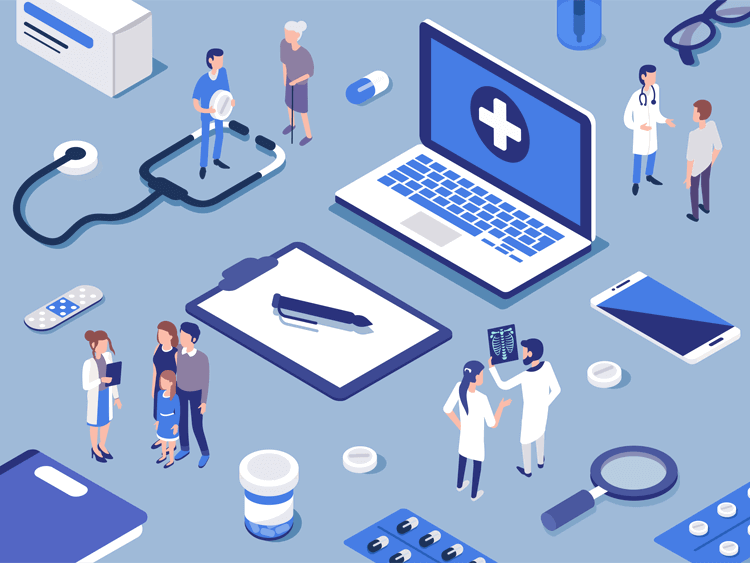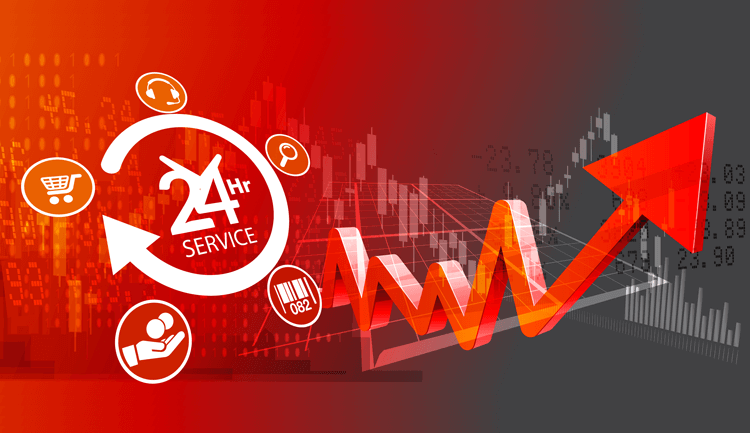Giva’s List of 24 Top Call Center Statistics for 2025
Call centers are a mission-critical component of numerous types of businesses, from banks to healthcare providers, telecoms to airlines.
Call center managers operate in a world of data, statistics, Key Performance Indicators (KPIs), customer satisfaction, and dozens of other metrics. It can be difficult to know which call center productivity metrics are the most important.
It's also useful for customer service and experience (CX) leaders to know what's going on across the sector. So, we've put together this comprehensive list of call center stats and call center performance data points, to give you a top-level overview and more granular information.
In this article, we've divided these 24 call center stats into the following sections to make it easier to find what you're looking for:
- Growth and Changing Landscape of the Call Center Software and AI Market
- Critical Challenges to Call Center Productivity
- Changing Customer Preferences
- Current Call Center Industry Benchmarks
- Keeping Customers and Staff Happy
Here are 24 of the most important call center stats that customer success managers and call center leaders need to know.

Growth and Changing Landscape of the Call Center Software and AI Market
Call centers are big business. Almost every Fortune 500 and similar-sized organization needs one or more call centers to ensure their customers are looked after, to solve customer problems, reduce churn, and keep revenue flowing in.
Even the largest organizations will quickly go out of business if they lose customers. With that in mind, many CEOs have started to see customer happiness and the customer experience (CX) as mission-critical and no longer a cost center. Instead, customer service is being seen as a profit-generating operation by C-Suite leaders.
Hence, the need for customer service software (SaaS), AI tools, and other solutions to better meet the needs of customers, managers, and staff.
-
The call center software (SaaS) market is growing fast: 23.9% CAGR between 2023 - 2030
Call center software is currently worth over USD $33 billion. This includes everything from legacy IT providers and cloud-based storage giants to new AI-powered startups. It's expected to achieve a Compound Annual Growth Rate (CAGR) of 23.9% from 2023 to 2030. (Research report)
-
Artificial Intelligence (AI) tools are the fastest growing sub-sector of this market: Could be worth over USD $10 billion by 2032 globally
There is no doubt about it, with the emergence of generative AI and other artificial intelligence-based tools, that call centers are having to adapt, adopt, and start using this technology.
As you will see below, the global AI market in the call center segment is currently worth approximately USD $2 billion. However, this is expected to be a high-growth sector, with the market for AI call center solutions anticipated to exceed USD $10 billion by 2032. (Fortune Business Insights)
-
North America is the quickest earlier adopter of the AI call center; up to USD $4.89 billion by 2026
Given the emergence of AI tools in the US, such as OpenAI's ChatGPT, it's no surprise that American call centers are early adopters of solutions designed for their needs. The North America AI call center market was already worth USD $2.62 billion in 2023, and the region is expected to have a USD $4.89 billion market share by 2026. (Precedence Research)
-
Speech analytics software is experiencing hyper-growth, too, up to 15.61% CAGR (2024-2029), potentially valued at over USD $6 billion by 2029
Speech analytics software is another AI-powered game changer for contact centers. There are dozens of tools on the market already.
Before speech analytics, calls were recorded and had to be picked over manually to find anything of value that could positively impact the customer experience, employee training, and process improvements. Now, that can be done in a fraction of the time, and the whole process is automated. It's no wonder that the speech analytics market is growing so fast, at a rate of 15.61% CAGR (2024-2029), and could be worth over USD $6 billion by 2029. (Research and Markets Speech Analytics Market Report)
-
Speech analytics can increase customer satisfaction scores up to 10% and decrease costs by 20-30%
A McKinsey report indicates that when speech analytics are used, customer satisfaction increases as much as 10%. If 10% of customers churn, that can cause serious business and cash flow problems, so happier customers are more likely to stay, and it's worth putting money into new software to retain them.
Further, costs can decrease by up to 30%, making speech analytics an even more worthwhile investment.
-
Predictive analytics improve efficiency and productivity by 60%
Similar to the advantages of speech analytics, predictive analytics can make a huge positive impact on productivity. According to a FinancesOnline report, when contact centers implement predictive and big data analytics, productivity can increase as much as 60%. Big data projects take time.
However, with new powerful machine learning models, we can expect the adoption rate of predictive analytics to accelerate in the years ahead.
-
AI chatbots can save up to 2 hours and 20 minutes per day
Customer service representatives using AI chatbots save up to 2 hours and 20 minutes daily, allowing them to focus on more complex issues. (Hubspot, via Fluent Support)
-
Global call center market was worth USD $352.4 billion in 2024 and is expected to increase to USD $500.1 billion by 2030
The global call center market was valued at USD $352.4 billion in 2024, and is expected to grow to USD $500.1 billion by 2030. (Research and Markets)
A number of factors are influencing this growth, such as the rise of AI and other technological advances, increased consumer expectations, the accommodation of increasing globalization, and a keener focus on the customer experience in general.
The global expansion of e-commerce and the customer support systems it requires are spearheading demand for more call centers.
Call centers are big employers in the US, employing over three million Americans. (CWA Union)
-
Almost every call center will be omnichannel within a few years
The omnichannel consumer engagement market is expected to reach a staggering USD $17.92 billion in sales by 2030. Customers would be able to seamlessly switch between channels while retaining consistent and tailored experiences thanks to highly integrated consumer interactions across platforms. (Grand View Research)
Omnichannel is becoming the norm. Freshworks states that 38% of customers want the agent who picks up the phone to solve their problem instead of being bounced around to different departments and put on hold. Agents are increasingly expected to be able to switch between communication types, too, such as calls and live chats, depending on inbound volumes.
Critical Challenges to Call Center Productivity
Call centers are facing numerous challenges, especially when it comes to employee turnover, absenteeism, overwork, stress levels, and burnout.
-
Staff turnover is still one of the most serious challenges the industry faces: Currently, between 30% and 45%
Employee turnover in call centers is far too high. At the low end of the spectrum, it stands at 30%, going as high as 45%. Some of the main causes are stress levels, limited pay and career options, pressure to meet performance metrics, poor management, and overwork, leading to burnout. (Nextiva)
When staff leave, it costs tens of thousands, as your investment in their training benefits another company, and then you must recruit and train someone new. Turnover is one of the most serious challenges industry-wide.
-
Customer Service Representative positions are projected to shrink by 5% over the next decade
Automation, social media, self-service and mobile apps will create a natural decline in the need for customer service interaction; a 5% reduction of workers is anticipated through 2033.
However, approx. 365,000 service representative openings are projected to be created each year. This is in anticipation of those exiting the labor force (retiring) and those who transfer to other jobs, companies or occupations. (US Bureau of Labor Statistics)
-
Absenteeism rates are highest in outsourced vs. in-house call centers (at 10%)
Absenteeism is high in call centers because of stress and anxiety. A Cornell University study found that in-house call center teams have a 6% absenteeism rate compared to outsourced, at 10%. Absenteeism in call centers stands at 8.2 days per year, compared to other sectors, only at 7.4. (Avoxi)
-
61% of businesses are reporting an increase in call volumes
Despite AI-based tools, like chatbots and self-service solutions for customers, call center managers are reporting an overall increase in call volumes. That's right, according to a McKinsey study, 61% of call center managers say volumes have increased since the pandemic years of 2020 and 2021. 58% expect this to continue due to the growing number of customers and increased contacts per customer.
Supercharge your call center agents and team performance with Giva's Customer Service Software.
Changing Customer Preferences
Customers are expecting better service, with problems solved more quickly by agents and AI or self-serve tools.
-
Customers hate being on hold and have less patience for it. Over 60% will hang up after two minutes or less
It isn't always possible for customers to get straight through to an agent. Call volumes spike at different times of the day, especially before work, lunchtime, and the first hour or so after work. Customers have less patience than they used to. Sixty-six percent of customers reach their limit at two minutes waiting on hold before hanging up.
-
Increased preference for self-serve or AI-based tools among customers
AI-based tools are becoming the first choice among the majority of customers. 67% of customers prefer self-service over speaking to a company representative.
-
60% of consumers would like to see businesses utilize the data collected on them to further personalize their customer experience
Customers much prefer to receive tailored offers and information based on their shopping and customer experience data. 76% of customers have come to expect personalization.
-
Almost 66% of consumers expect more personalized service with AI
With the advent of AI, customers are expecting even more and faster automated, personalized service.
Current Call Center Industry Benchmarks
How does your call center match up to these current industry standard benchmarks?
-
The average time it takes agents to answer a call is 20 seconds
The 80/20 rule is applied to this benchmark metric. Agents are to aim to answer 80% of calls within 20 seconds, and to average 28 seconds overall.
Continuing on from the stat above; thankfully, the majority of calls are answered within 20 seconds. So, most customers actually get through and won't give up until the 1-2 minute mark. (Invoca)
-
Current Average Handling Time (AHT) is six minutes
Industry-wide, AHT currently stands at six minutes, according to the same surveys mentioned above. AHT includes how long it takes from the time a support ticket is submitted to the time it is declared closed, or resolved. However, due to industry changes in customer satisfaction emphasis, AHT may take longer to make sure the customer's needs have been fully met with efficiency. This will reveal itself with improvement in other customer satisfaction metrics.
-
The current global benchmark for First Call Resolution (FCR) is 80% or higher
First Call Resolution (FCR) is one of the most important metrics in contact centers. Customers are increasingly unforgiving of agents passing them on to other teams. Most would prefer that the agent who answers their call also solves their query, and does so on that call. An acceptable FCR rate in previous years has been 70%. Now, call center agents are expected to strive for a rate of 80% or higher. Certain industries may have a lower average due to accuracy and security or privacy issues. (Nextiva)
-
The average Customer Satisfaction Score (CSAT) benchmark is now 85% or higher
The CSAT score is based on customer feedback, providing valuable information on how your customers feel they are being treated and if they are satisfied with their experience. CSAT scores averaged approx. 75% in years past. Now, with customer feedback scores becoming increasingly integral to business success, the average CSAT goal is 85% or higher.
-
Smaller call centers average 50 to 100 calls per agent per day
According to Live Agent, smaller call centers average 50 to 100 calls per agent per day. Larger, more automated centers may be able to handle many more calls, averaging hundreds to over a thousand calls per agent per day. This stat is very subjective according to various factors.
Keeping Customers and Staff Happy
-
Returning customers spend 67% more than new customers
Customer satisfaction is the key to the customer service kingdom. According to Business.com, returning customers spend 67% more than new customers. On the flip side, adding new customers costs 5 to 10 times more than retaining existing ones. So, it makes "cents" to ensure you are laser focused on providing excellent customer service.
-
Happy agents make happy customers — a winning combination
Call center managers are tasked with improving agent job satisfaction, which they believe will improve CSAT scores by 62%. Efficiency is also raised by 56% and agent retention boosted by 39%.
And there you have it, 24 of the most useful stats about call centers and the way innovative new solutions are impacting the industry.
Giva Can Help Streamline Your Call Center Operations
Supercharge your call center agents and team performance with Giva's Customer Service Software. Giva comes with a simple, clean design. Transforming everyday customers into raving fans, brand ambassadors and evangelists.
Get a free demo to see Giva's solutions in actions, or start your own free 30-day trial today!





